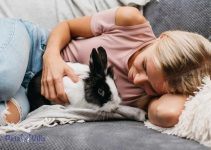The ever-smiling quokka has gained popularity recently, especially among pet owners, thanks to the Quokka selfies that have been trending.
The fact that they are the size of a teddy bear and are named the world’s happiest animal by National Geographic makes you want to keep a pet quokka.
But can you?
Today, I will discuss all you need to know about the quokka pet and whether it’s legal to keep one as a pet.
Table of Contents
What is A Quokka, Exactly?
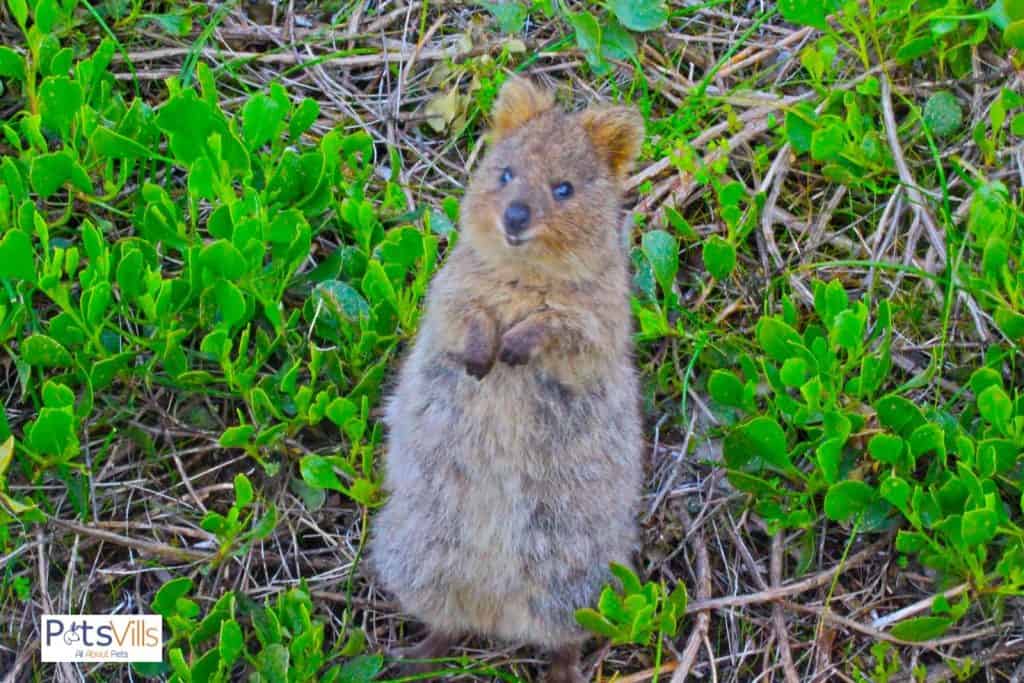
The quokka belongs to the Marsupial species family known as Macropods. Other animals that belong to the Macropod family include wallabies, kangaroos, pademelons, and wallaroos.
The term “Quokka,” which should be pronounced “Kwaa-kaa,” came from the Aboriginal people who lived around the King George Sound area.
Quokka Description
Quokkas are almost similar to kangaroos, only that they are as small as a domestic cat. They have small forearms and larger, stronger hind legs, which they use for hopping.
They are short, stocky, with round ears and a black nose. Their most striking feature is their face since they look like they are always smiling.
Tourists travel from all over the world just to get a selfie with this animal due to the “smile.”
Male quokkas can weigh up to 5 kg, while females can grow up to 3.5 kg. The average height is about 21 inches, and the tail grows up to12 inches long.
Dutch explorers first discovered the Quokkas in the 17th Century around the Rottnest Island, Australia. Willem De Vlamingh thought they were giant rats.
That’s why he named the Island Rottnest, derived from “Rattenest,” Dutch’s name for a rat’s nest.
Dutch Explorer, Volkersen, was the first to associate the quokka with a cat when he stated that quokkas look like Asian Civet cats.
Reproduction
Being Marsupials, Quokkas have a pouch where they keep their babies, also known as joeys, for about six months, after the first month of gestation.
Their breeding season occurs between January to August on Rottnest Island. But mainland quokkas can breed throughout the year.
While they seem happy and social, quokkas occasionally fight for food, habitat, or even mates.
Quokkas use what’s known as Embryonic Diapause, where they mate immediately after giving birth. This way, they will have a “back up” embryo if the one they just gave birth to doesn’t make it.
This extra embryo also acts as a defense mechanism.
When a predator is chasing a quokka, the quokka will drop the embryo, which will produce a loud hissing sound. This distracts the predator as the quokka runs away.
Don’t let this feature make you dislike them. It’s just what they have to do for survival in the wild, and it only happens occasionally.
Besides, other animals do it too. In such situations, kangaroos also eject their babies, rats eat their young ones, and ostriches sometimes sacrifice some eggs.
I guess the mentality is that they will have more babies. Since, in their entire lifespan (about 10 years), Quokkas can give birth to up to 17 joeys.
Mainland populations can live in colonies of up to 50 quokkas in the wild, but larger groups with hundreds of quokkas exist on the island.
Where Do Quokkas Live in the Wild?

Most of the Quokkas’ population exists on Rottenest Island, Australia.
Fewer populations have also been spread out in Bald Island and other parts of Western Australia’s southern region.
Unfortunately, Quokkas don’t exist in any other part of the world.
The population in Rottenest Island has tremendously grown in the past few years due to social media tourism.
As mentioned earlier, everyone wants to take a selfie with these pets, and there was even a hashtag, #quokkaselfie, that went viral in 2012 that led to an increase in tourists.
Despite the development and increased population on the island, the quokka’s population is still growing.
Quokka’s existence is endangered on the mainland since there are more predators such as snakes, foxes, dogs, feral pigs, and cats.
Since they prefer swamplands and regions with dense vegetation, global warming, habitat loss, urbanization, agricultural development, and an increase in the human population are other reasons the Quokkas population is declining.
Where Can I see Quokkas?
You don’t have to travel to Rottnest Island to see quokkas, though you’ll have a better chance of seeing them there.
These animals can also be found in various zoos across Australia, where you get the opportunity to see other Australian animals.
Quokkas Health
Quokkas are prone to Muscular Dystrophy and have even helped find a cure for people suffering from this condition.
Do Quokkas Make Good Pets?
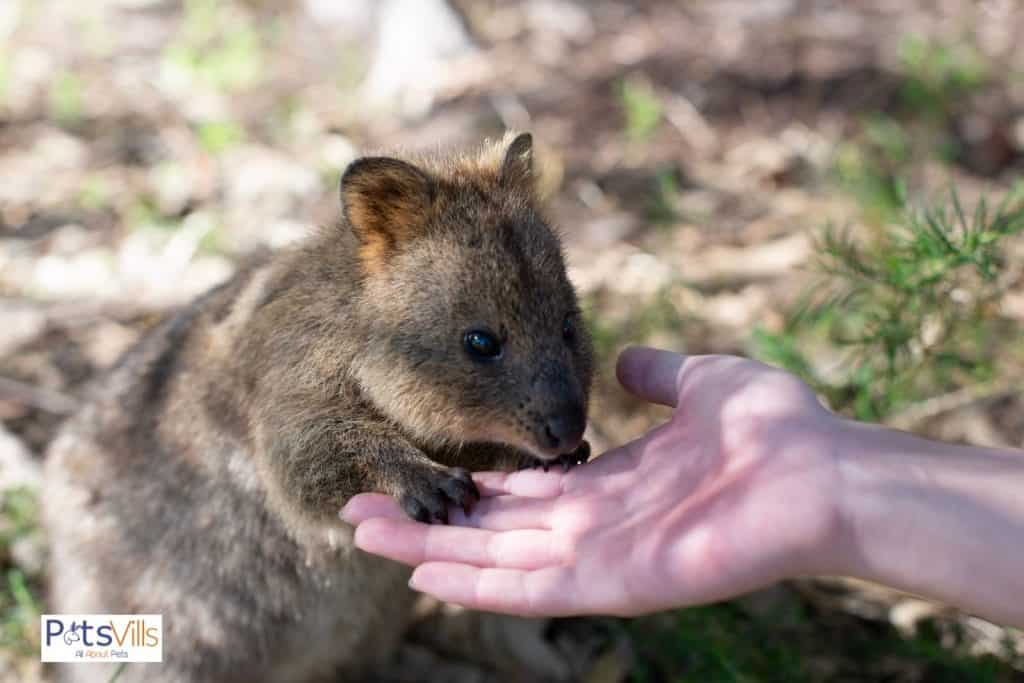
While they look cute and all, Quokkas are not domesticated and may not be the best choice for a pet.
Yes, they are used to having humans around and are generally docile, but is it even legal to have a pet quokka?
No, it’s not. Quokkas are an endangered species, and as per the Australian government’s Rottnest Island Authority Act of 1987, they should spend most of their time in their original habitat.
They are used to certain plants and specific climates that are only found in Western Australia. You will not be doing Quokkas any favors by adopting them as pets.
And if you thought you could get a quokka from Australia and bring it back home, forget about it since that’s not allowed either.
If you wanted to help them, donate to organizations trying to preserve these animals or adopt a virtual quokka – where you contribute to the animal’s welfare without bringing it to your home.
Are Quokkas Good First Pets?
As mentioned earlier, quokkas are not pets. If you’re looking for a good first pet, you’ll be better off with guinea pigs, mice, or cats.
Quokkas have actually become a nuisance to locals and even tourists since they also steal their food. Imagine having to live with such an animal.
Cats can be mischievous, but not to the extent of stealing food.
Besides, Quokkas are nocturnal. And if you’ve owned sugar gliders or any other nocturnal animals, you know how tiring it can be to deal with their different schedules.
Are Quokkas Aggressive?
Quokkas are friendly but could be aggressive if provoked. They have very sharp claws and teeth, and there have been several cases of quokka bites.
Those on Rottnest Island are quite approachable since they are used to having people around. That’s why it’s very easy to walk up to them and take a selfie. But be careful not to get too close and avoid touching them.
You may have to pay fines ranging from $300 to $50,000 and even jail time for touching and deliberately hurting a quokka.
This may sound strict, but it’s for your own good too since they could hurt you or transfer Salmonella and other diseases.
Besides, it’s necessary to protect endangered animals, considering many animal species are becoming extinct due to human activities.
Quokka Diet
What Do Quokkas Eat in The Wild?
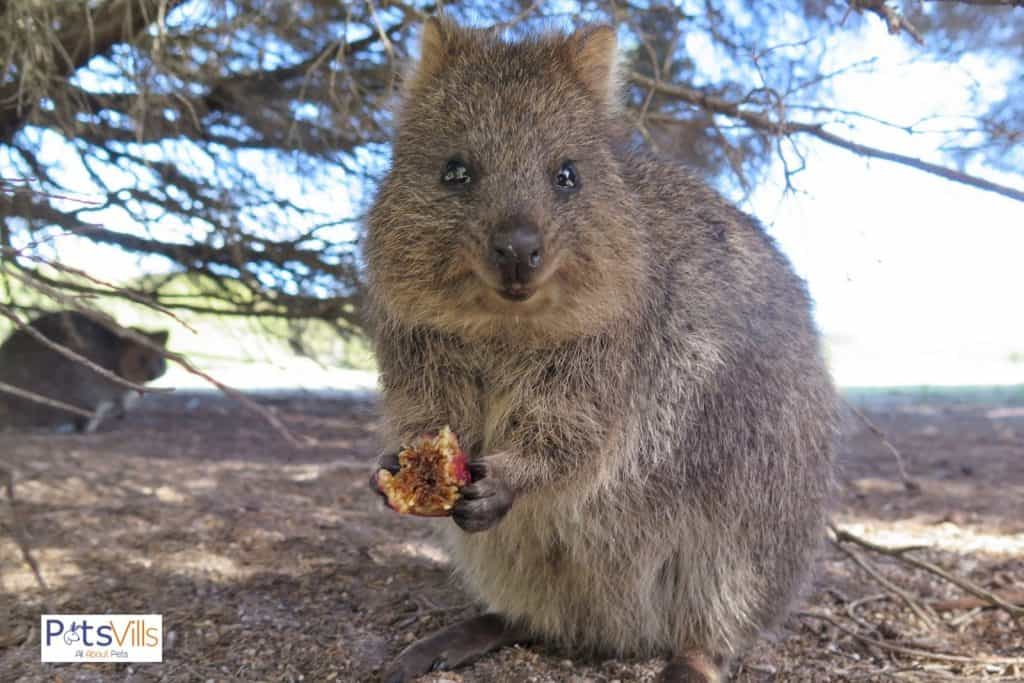
Quokkas are herbivores, and they mostly thrive in forests that have just been burnt down.
This is because such areas have lots of fresh undergrowth.
But they will also eat most of the vegetation found in southern forests and other parts of Western Australia.
These animals have an interesting feeding habit which they split into time for leaves, grass, water, and time to rest.
When they can’t find fresh water, they often feed on succulents. They can also go for long periods without food.
You’re not allowed to feed quokkas any human food or packed water since it’s not safe for them. You could also be slapped with a fine if you attempted to feed them.
What should you feed your pet quokka?
If you happen to be taking care of quokkas, always fed them wild grasses, twigs, and leaves. If possible, let them browse in any new undergrowth.
Quokka Price and Adoption
How Much Do Quokkas Cost?
Considering the cost of other exotic pets, I think you would have to pay anywhere between $500 and $5000 to buy a Quokka. That is just an estimate since buying and selling quokkas is illegal.
Where can you buy a Quokka in the USA?
You cannot own a quokka in the USA. As mentioned earlier, there are strict laws in Australia that prohibit exporting quokkas and other endangered pets.
In the United States, there are also regulations that prohibit importing endangered animals.
FAQs About Quokkas
Do Quokkas Really Throw Their Babies?
Yes, they do, as a defense mechanism. Female quokkas drop their babies when predators are chasing them. The hissing sound provides a distraction, giving the mother a chance to get away.
What is a Baby Quokka Called?
Baby quokkas are called joeys.
Are Quokkas Really Happy?
While they have smiling faces, quokkas are just wild animals. They have the instincts and behaviors of wild animals. Sometimes they’re friendly, other times they’re mean. The smiling face is what some scholars call an accident of evolution.
Where Can I Find Quokkas?
Quokkas are mostly found in Rottnest Island, near Perth. A smaller population is also found in Bald Island. Mainland populations aren’t that high, but some zoos in Australia also have Quokkas.
Conclusion
What better way to get into a good mod than look at a smiling animal? Did you know that looking at cute animals like quokkas relieves stress and anxiety?
Too bad you can’t own one of these selfie kings since they’re endangered and used to a specific environment.
You can go to Australia to see them in person or consume other people’s photos, and you’ll still reap the benefits.
As we’ve established, you can also support the conservation of quokkas by donating or adopting a virtual quokka.
References
- Delalande, Joanna. 2019. “How Our Quokkas Are Helping a Young American Walk Again.” The West Australian. The West Australian. February 22, 2019. https://thewest.com.au/news/wa/how-our-quokkas-are-helping-a-young-american-walk-again-ng-b881110983z.
- Flint, Kirsten. 2017. “Quokka Cure, Not Quackery.” Particle. Particle. August 23, 2017. https://particle.scitech.org.au/people/quokka-cure-not-quackery/.
- Giacomo Abrusci, SEVENSEAS Media Editor-in-Chief. 2020. “Watching Cute Animals Can Reduce Your Stress Levels by up to 50% — SEVENSEAS Media.” SEVENSEAS Media. November 3, 2020. https://sevenseasmedia.org/watching-cute-animals-can-reduce-your-stress-levels-by-up-to-50/.
- “PMQ 元創方 | Ethical Selfies with the Happiest Animal in the World?” 2012. PMQ 元創方 | Ethical Selfies with the Happiest Animal in the World? 2012. https://www.pmq.org.hk/leisureculture/rottnest-island/.
- Ptak, Grazyna E., Emanuela Tacconi, Marta Czernik, Paola Toschi, Jacek A. Modlinski, and Pasqualino Loi. 2012. “Embryonic Diapause Is Conserved across Mammals.” Edited by Wendy Dean. PLoS ONE 7 (3): e33027. https://doi.org/10.1371/journal.pone.0033027.
- Quokka. 2021. “Quokka.” The Australian Museum. 2021. https://australian.museum/learn/animals/mammals/quokka/.
- “Why Do Female Mother Rat Eat Her Own Baby for Some Instance?” ResearchGate. ResearchGate. 1993. https://www.researchgate.net/post/Why-do-female-mother-rat-eat-her-own-baby-for-some-instance.
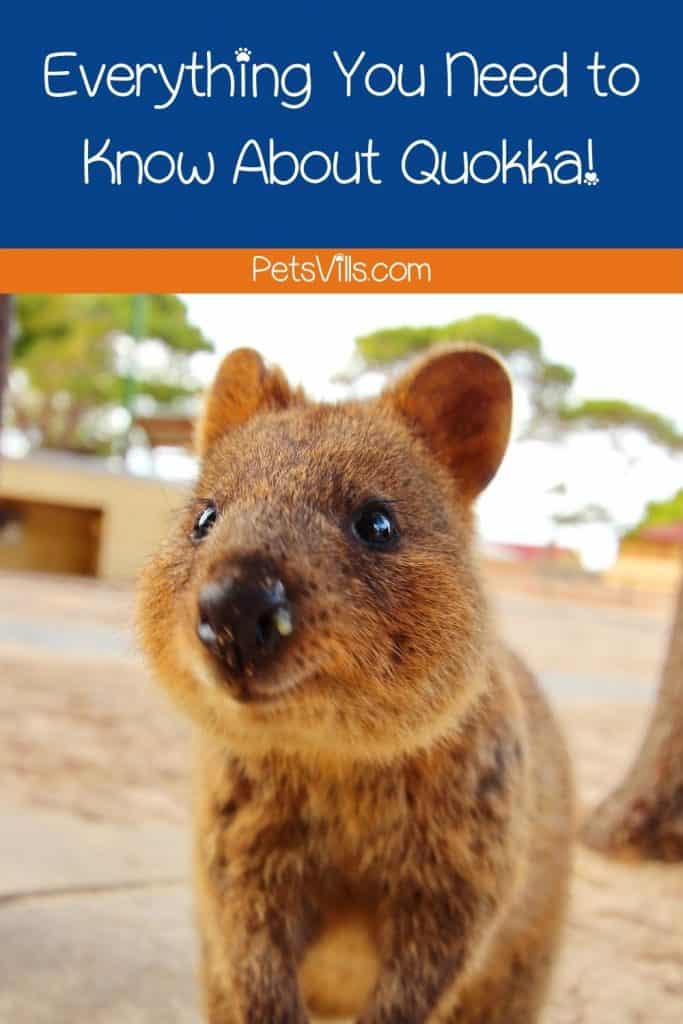
What do you think of Quokka? Aren’t they lovely? Please share your thoughts below!
Barry Stingmore is a British content writer living in Fuerteventura, Spain. An animal lover at heart, he shares his home with a dog and four rescue cats and has a passion for writing about animals big and small.
Barry loves finding answers to your animal-related questions, the more research involved the better! You can rely on him to find the facts.
Find him on FACEBOOK, TWITTER AND Linkedin
Read his latest ARTICLES.
Find more about him HERE.

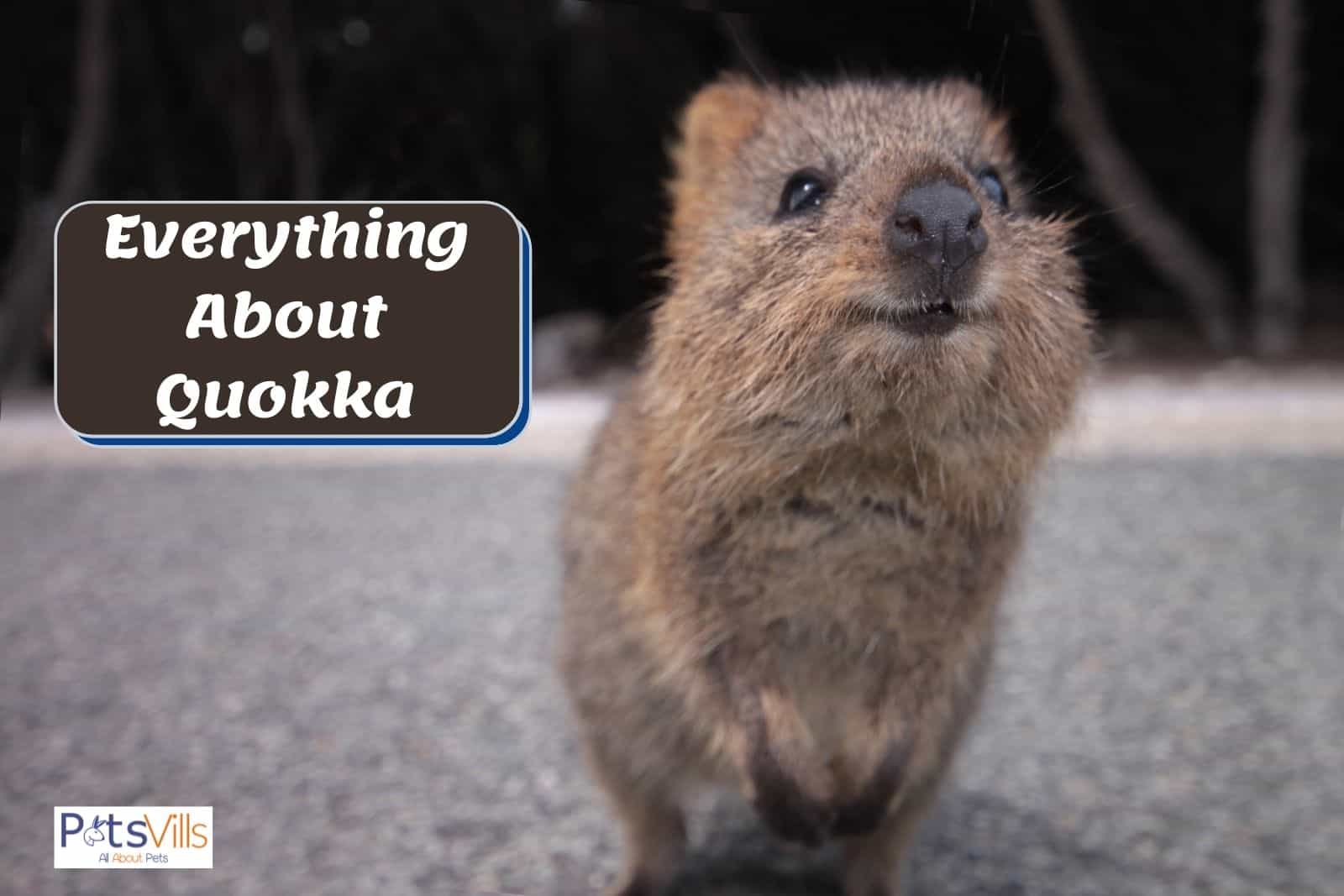
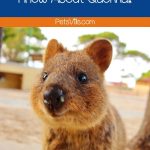

![5 Ways To Protect Your Pets While Traveling [Foolproof Tips]](https://petsvills.com/wp-content/uploads/2023/05/Ways-To-Protect-Your-Pets-While-Traveling--211x150.jpg)
